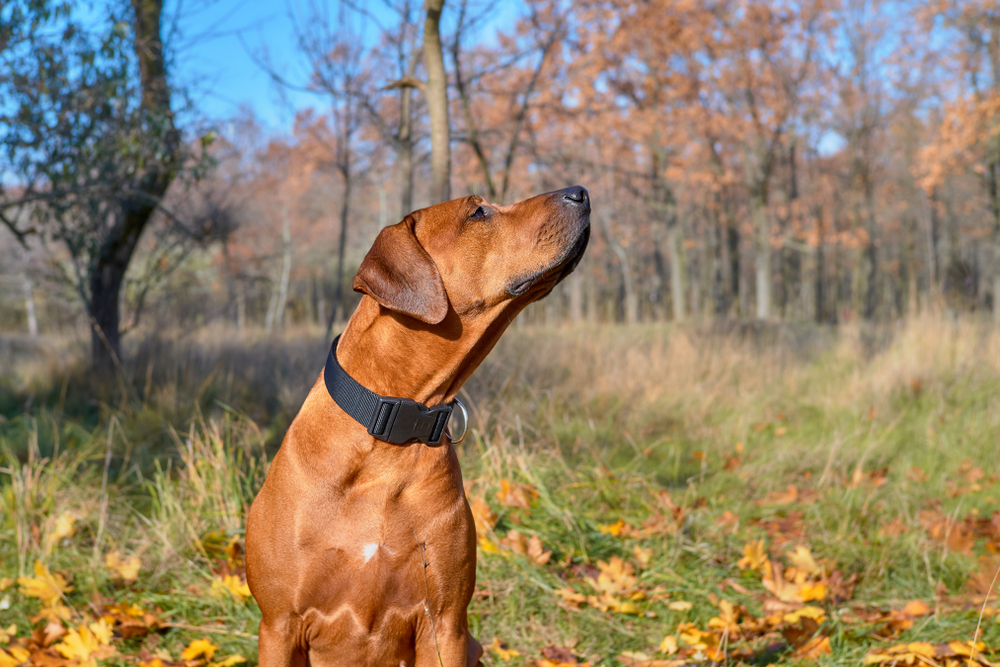
You no doubt have heard conflicting information about using lavender around dogs, with the question being whether it’s safe to do so. The issue is that there are both yes and no answers, depending on the situation and different variables. Hopefully, we can help you deal with this quandary by explaining what lavender is, how it’s used, and when it’s safe for dogs.

What Is Lavender?
Lavender, or Lavandula angustifolia, Lavandula latifolia, or Lavandula officinalis, is a shrubby plant that tends to grow on sunny, rocky hillsides. It produces a fragrant purple flower that is the source of all its medicinal magic. Oil extracted from lavender blossoms has been used to help calm anxiety and stress, promote sleep, and help reduce pain. It may also possess antibacterial and antiviral capabilities.
Lavender oil has been incorporated into many human calming lotions, ointments, soaps, sprays, and supplements. It has also been used to promote hair growth on balding scalps.

How Is Lavender Given to Dogs?
You may see the same kinds of products, including calming sprays, shampoos, and oils, available for canines that suffer from stress and anxiety or difficulty sleeping. It’s also sometimes part of natural bug-repellent products.
But here’s where most of the confusion comes in. According to the ASPCA, lavender is toxic to dogs when consumed in large amounts.1 The plant contains a compound called linalool, which can lead to signs of digestive upset in dogs, including vomiting, diarrhea, and inappetence—if they eat enough of it. The interesting part is that fresh lavender doesn’t contain high concentrations of linalool, but the essential oil version does.
Ultimately, using different types of lavender oil products on your dog may have varying effects. For example, having dried lavender around may provide safe aromatic relaxation benefits, while feeding lavender essential oil to your dog can end up creating stomach problems for days. Make sure you speak to your veterinarian before using lavender products around your pet so you choose a method and dose that is safe for them.
💛 🐶 Speak To a Vet Online From the Comfort of Your Couch!

If you need to speak with a vet but can’t get to one, head over to PangoVet. It’s an online service where you can talk to a vet online and get the personalized advice you need for your pet — all at an affordable price!
What Happens If You Miss a Dose of Lavender?
Most of the time, any lavender that you use around your dog won’t be on a regular basis. Instead, you may use a calming spray for trips to the vet or apply a calming shampoo when your dog is overly stressed. Always make sure the lavender product that you’re using is safe and approved for dogs by first talking to your vet.

Potential Side Effects of Lavender in Dogs
The biggest issue regarding lavender and canines is when it is ingested. A high concentration of linalool can cause digestive problems, which means you should not give lavender essential oil to your dog. They’ll also have issues if they eat lavender oil-containing products, such as lotions, creams, or supplements.
Some dogs may even have reactions to diffused lavender essential oil. If your dog has a sensitive respiratory system, they can be wheezing or coughing or have watery eyes or even difficulty breathing if they’re exposed to high concentrations of the diffused oil.
You may also see skin irritation or another allergic reaction if you don’t dilute lavender essential oil before putting it on a dog’s skin. Speak to your vet before using a product like this to make sure you are applying it in safe concentrations on a healthy pup. Essential oils in general can be dangerous to canines, so it’s better to get a lavender-containing canine product like commercial dog shampoo or spray rather than make your own.

Frequently Asked Questions (FAQ)
Is It Safe for Dogs to Smell Lavender?
The answer to this depends. Sniffing a fresh lavender plant shouldn’t cause any problems, but smelling diffused lavender essential oil may cause a reaction, depending on your dog. Generally speaking, canines should not be exposed to diffused essential oils of any kind, especially in a confined space.
Smelling a product, such as a shampoo or soap, that contains lavender shouldn’t lead to any issues, though.

Can I Spray Lavender on My Dog’s Bed?
Sprays scented with lavender can be calming and help induce sleep for certain pups, so spraying your dog’s bed with one of these sprays is typically considered safe. However, you should talk to your vet first to make sure your pet doesn’t have any health concerns that could be an issue. Keep the product stored in an area where your pup can’t get it.
Can Dogs Be in a Room With Lavender Essential Oils?
The aroma of lavender can be a great calmer for canines, but it needs to be diffused safely. Generally speaking, you shouldn’t diffuse any essential oil around your dog in a confined space because their sensitive respiratory system may have a reaction to it. That said, you may be able to dilute the essential oil to a safer concentration or diffuse it in a larger area so the oil isn’t as concentrated. Speak to your vet first to find out if diffusing lavender is the right choice for your dog.

Conclusion
Lavender takes on many forms—some are safe for dogs and others aren’t. Being around fresh or dried lavender is typically safe and can still produce the desired calming or sleeping benefits, but ingesting lavender essential oil should be avoided. Before using any lavender or lavender-containing products on your dog, talk to your veterinarian to make sure your product of choice is safe and to learn how to use it properly.
Featured Image Credit: Mouse23, Pixabay

